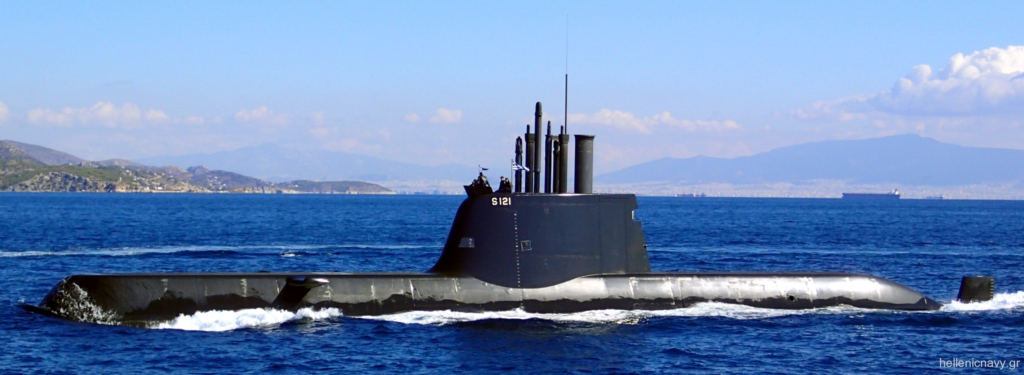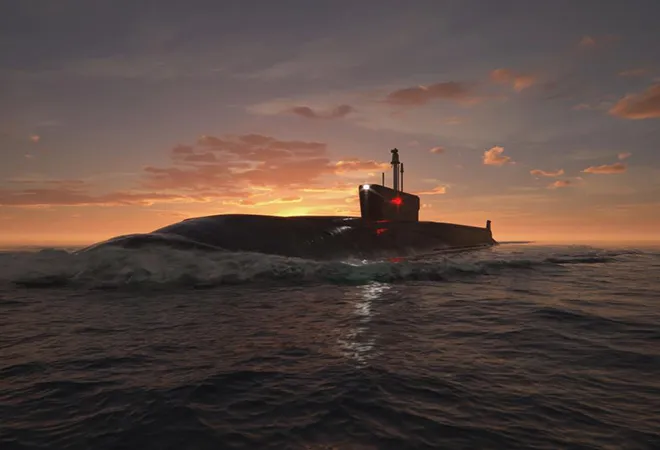The Indian Navy’s ambitious plan to procure 24 conventional submarines by 2030 has been hindered by significant delays, resulting in the acquisition of only 6 Kalvari class submarines thus far. One notable drawback of the Kalvari class submarines is the absence of an Air Independent Propulsion (AIP) system, a key feature that enhances endurance and stealth capabilities. This deficiency highlights a critical area where improvements are needed to bolster the Indian Navy’s underwater capabilities.
An Air Independent Propulsion (AIP) system is a technology used in submarines to allow them to operate underwater for longer periods without the need to surface or snorkel for air. there is a diverse range of Air Independent Propulsion (AIP) systems available in the market, each offering unique advantages and facing specific challenges. These systems, designed to enhance submarines’ submerged endurance and stealth capabilities, come in various types such as closed-cycle, open-cycle, fuel cell-based AIPs and Stirling cycle AIPs.
Range Comparison with AIP.
In the photograph, you can observe the significant endurance difference between an AIP-based submarine and a conventional one. For instance, at a speed of 10 knots, up to 50% of the power required can be provided by AIP. Assuming that the AIP system can sustain 50 to 60% of the onboard power and propulsion needs, it enables the submarine to achieve ranges up to five times greater compared to using the same fuel without snorkeling. This extended range capability without the need for surfacing (snorkeling) is a key advantage of AIP technology, enhancing operational flexibility and stealth capabilities in underwater missions.

Open Cycle Type AIP: During World War II, the German firm Walter conducted experiments with submarines utilizing an open-cycle Air Independent Propulsion (AIP) system. These submarines used high-test (concentrated) hydrogen peroxide as their source of oxygen underwater. The system involved steam turbines powered by steam generated from burning diesel fuel in the steam/oxygen atmosphere created by the decomposition of hydrogen peroxide catalyzed by potassium permanganate. Despite several experimental boats being produced, this technology did not advance into practical combat vessels due to various challenges and limitations.
Closed Cycle Steam Turbine : The French MESMA (Module d’Energie Sous-Marin Autonome) system, developed and offered by DCNS, represents a significant advancement in Air Independent Propulsion (AIP) technology for naval applications. This system is specifically tailored for integration into Agosta 90B and Scorpène-class submarines, showcasing its adaptability across diverse submarine platforms. MESMA stands out as a sophisticated adaptation of traditional nuclear propulsion principles, leveraging the thermal energy derived from the combustion of ethanol and oxygen. This energy is harnessed to drive a conventional steam turbine power plant, generating steam at elevated pressures of up to 60 atmospheres. A distinctive feature of MESMA is its pressure-firing mechanism, which enables the efficient expulsion of exhaust carbon dioxide without necessitating an exhaust compressor, thus enhancing operational flexibility across varying depths. It is noteworthy, however, that MESMA’s operational profile is marked by a comparative increase in acoustic emissions due to the presence of moving components within its design architecture.

Stirling cycle engines: The utilization of Stirling engine technology in submarine propulsion marks a significant technological leap, as demonstrated by Swedish shipbuilder Kockums in their construction of three Gotland-class submarines for the Swedish Navy. These submarines are equipped with auxiliary Stirling engines that utilize a combination of diesel fuel and liquid oxygen to power 75 kW electrical generators, serving both propulsion and battery charging purposes. With an impressive underwater endurance of approximately 14 days at a speed of 5 knots (5.8 mph; 9.3 km/h) and a range extending up to 1700 nautical miles, these 1,500-tonne submarines showcase the efficacy of Stirling engine-based AIP systems in enhancing operational capabilities.
Moreover, Kockums’ collaboration extended beyond Swedish waters, as evidenced by their delivery of Stirling engines to Japan, where ten submarines were outfitted with this advanced propulsion technology. The inauguration of the first submarine in this class, Sōryū, on 5 December 2007, marked a milestone in the integration of Stirling engines into international naval fleets. Notably, China has also embraced Stirling engine technology, purportedly incorporating an air independent propulsion (AIP) system utilizing Stirling engines into the latest Project 039A Yuan-class submarine of the People’s Liberation Army Navy (PLA(N)), further underlining the global recognition and adoption of Stirling engine innovations in modern submarine warfare strategies.However, these type of AIP are difficult to maintain, costlier to construct and add up to acoustic signature.

Fuel Cell Type AIP : Fuel cell type Air Independent Propulsion (AIP) systems represent a cutting-edge advancement in submarine technology, offering enhanced stealth and extended underwater endurance capabilities. These systems utilize proton exchange membrane fuel cells (PEMFCs) or solid oxide fuel cells (SOFCs) to generate electricity through the chemical reaction between hydrogen and oxygen, without the need for combustion. One of the key advantages of fuel cell AIP systems is their silent operation, making them ideal for stealthy underwater missions. Additionally, they produce minimal exhaust emissions, reducing the risk of detection by enemy sensors. Fuel cell AIP systems have been adopted by several navies worldwide, including Germany’s Type 212 and Type 214 submarines, South Korea’s KSS-II and KSS-III submarines and Spanish S80 plus. These submarines benefit from significantly extended submerged endurance compared to traditional diesel-electric submarines, making fuel cell AIP a crucial technology in modern submarine warfare strategies. India’s DRDO has developed a fuel cell type AIP already and it is is under testing.

One drawback of Fuel Cell type Air Independent Propulsion (AIP) systems is the necessity of storing hydrogen in large tanks. This requirement not only makes them vulnerable but also occupies a significant amount of space, which can be challenging in situations where real estate is limited.

The importance of a proven Air Independent Propulsion (AIP) system for the Indian Navy is underscored by the need for enhanced endurance and operational flexibility. The ongoing competition between the S80 Plus and Type 214 submarines is poised to elevate the capabilities of the Indian Navy’s conventional submarine fleet significantly. A reliable AIP system not only extends underwater endurance but also enables submarines to operate stealthily without the need for frequent surfacing, thereby enhancing their strategic value in various maritime scenarios.
This emphasis on advanced AIP-equipped submarines reflects the Indian Navy’s commitment to modernizing its naval assets and strengthening its maritime defense capabilities.
